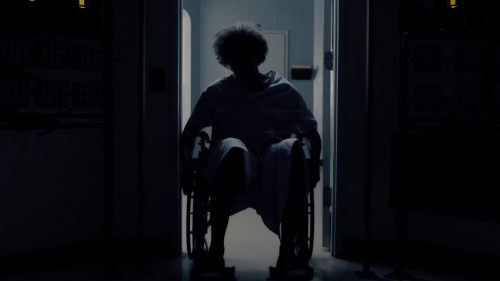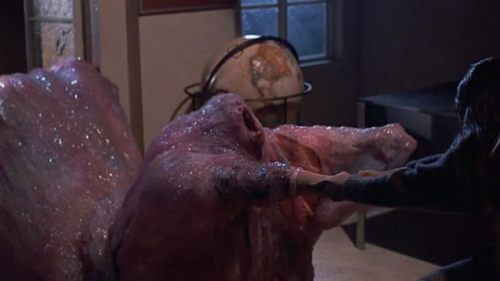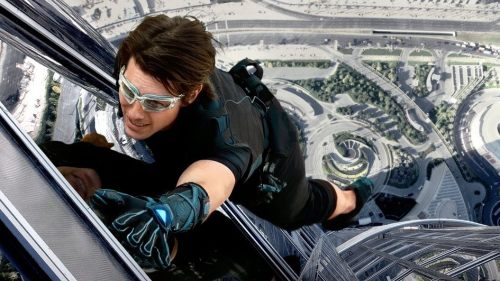Sunday Reads: Mario Bava, Slasher Godfather
When you think about the films that inspire their own sort of mini sub-genre, they tend to seem quaint in comparison to what followed, as the successors went with a "bigger = better" mentality until the point of ridiculousness. That's why if you go back and watch Saw you realize it's not really that violent or gory, and (stepping outside of horror) why Die Hard's mere 12 terrorists in a building is nothing compared to say, a battleship crawling with bad guys like Under Siege, or the entire city of New York (and even more bad guys) in one of Die Hard's own sequels. But there is one exception: Mario Bava's A Bay of Blood*, which is rightfully credited as an inspiration to the slasher genre and yet is more complicated than the entire Scream series put together.
The opening sequence probably plays better now than it did back then, as we've had decades of structurally similar slasher movies to put our expectations in place. When the film begins, a lone woman is cautiously making her way around her house during a storm when she is suddenly killed by a black-gloved stranger. This is nothing new on its own - the black-gloved man or woman is our mystery killer and we will find out who he/she is during the final reel...except Bava pans his camera up and shows the man's face, plain as day. Of course, this is the first scene in the movie and thus his identity means nothing to us, but it doesn't matter - because someone kills him a few minutes later! And he won't be the last killer to star in his own death sequence - when all is said and done, there are five different murderers in the film (for a total of 13 deaths), which is more than the intentionally ridiculous number in the movie Clue ("Then who did I kill?").
That said, the film is not that difficult to follow, as Bava tosses in a few (slightly clunky) flashbacks to smooth over a few plot points during the third act, and when all is said and done you know who killed who - it's just funny that the "granddaddy of the slasher movie" requires you to pay any real attention to follow along. You can skip a half hour of your average '80s slasher and have no problem keeping up with the narrative, but here you might be thrown for a loop when the guy you saw kill someone is suddenly in the victim role. And this is of particular interest when you watch it for the first time post-Friday the 13th (and its first sequel) and see how much Sean Cunningham and Steve Miner ripped off "paid homage" to the film. I love these movies dearly, but I'll be the first to admit that their narratives are flimsy even by slasher standards, making it amusing that they were inspired by one that might require a notebook to keep track of who's who. Even Pamela's sweater is similar to the one worn by the film's primary killer Simon, and the POV shots Cunningham employed, sometimes wrongly attributed to Carpenter's influence, are clearly taken from this film. Miner went even further for F13's first sequel; not only is the lakeside cabin setting very similar to the one in this movie, but he flat-out steals the famous double impaling murder of a couple making love:

And the reason everyone is killing each other is over a piece of real estate, and you might be surprised how many times that concept has been recycled (when I was doing Horror Movie A Day, I would often half-jokingly consider tagging such films the same way I did if they were Asian or Monster or Slasher movies: "Real estate horror"). But again, these films are usually more straightforward (the terrific Hong Kong slasher Dream Home, for example), as few seem to think Bava's idea of having multiple murderers was a good idea. Sure, we've had films like Scream where there were two killers, but they were working together - here the killers tend to be done in by other killers. Using Scream as an example, it'd be like if Stu killed Billy (who would have had little knowledge of Stu's own agendas), Sid killed Stu and then someone killed Sid for good measure.
But despite their different motives and lack of team orientation, the killers here all share a passion for creative murdering. You'd think that a real estate extortion scheme could be carried out with a few guns, but the film's lone gunshot murder is... well, I'll leave that surprise for those who haven't seen it yet. Everything else, despite the fact that a number of the kills are merely to silence a witness (or a potential one), offers a sense of showmanship, with a variety of weapons to boot - a fisherman's spear, a billhook, an axe, strangulation... even Jason would be impressed with the number of implements that are used over the film's 84 minutes. Most of them are sufficiently gory as well, something that was probably unexpected (apparently Christopher Lee walked out of the film, disgusted with its otherwise unseen level of violence). While gore wasn't new (Herschell Gordon Lewis had been at it for almost a decade at that point), Bava's previous films were decidedly classier than anything ol' HGL was up to, so I doubt Lee or anyone else expected to see something like THIS in a film from the director of Black Sabbath:

See, unlike many of his fellow Italian horror kings (Argento, Fulci, etc), Bava wasn't really known for indulging in the splatter. Even his previous film Hatchet for the Honeymoon, which also involved multiple murders, avoided gore for the most part - he would cut away to flashbacks when the killer struck. But here he seems to be making up for lost time, even inventing a classic slasher staple - the random teens who just want to drink and have sex. You could easily cut this foursome out of the film with minimal effort, as they have nothing to do with the real estate plot, but it's precisely this sort of thing that makes it an essential part of the slasher lore. It's their needlessness that inspired so many other slashers down the road, as Jason and Michael and all their less successful peers would always kill at least one person for no real reason other than the fact that it had been a while since the last kill (think the random hitchhiker in Final Chapter, or the neighbor girl in Halloween II).
These deaths (which include the ones that are pictured above) are the bloodiest in the movie, and it's the mild excess in these moments that was probably most to blame for the film being censored for certain territories, with anywhere from 45 seconds to around 8 minutes (!) excised for one reason or another. Carlo Rambaldi was still a few years away from moving out of this sort of thing with bigger budgeted fare like King Kong '76 (and later, E.T.), but no novice either - his kill FX are terrific and mostly hold up even under the scrutiny of HD transfers. Speaking of which, there are some really bad versions floating around - my first viewing was on a disc so bad that it left me unable to enjoy the film. There's a pretty good one on Anchor Bay's (now out of print) Bava box, and the version on Fandor is pristine... everything else I can't vouch for, so proceed with caution. After seeing it on a proper presentation it quickly became one of my favorite Bava films - it's amazing what audible dialogue and a complete image can do for your opinion.
The history of the slasher film is one I find very fascinating, and a big part of that is how slowly it evolved. 1960 gave us both Psycho and Peeping Tom, both instrumental in the sub-genre's history without actually BEING slashers by the common definition, and then it took 20 years from them to get to Friday the 13th, the success of which (thanks in part to its major studio distribution, unlike Halloween's independent release) cemented the sub-genre once and for all and inspired the biggest wave it will ever see. A Bay of Blood is almost exactly in the middle of that time period, detouring from the traditional giallo structure into new-ish territory, and inadvertently laying the foundation for one of horror's most prolific sub-genres. An absolutely essential film to watch for anyone who has ever tried to sound smart by mentioning how much Halloween owes to Black Christmas - you can fire right back by name-checking this.
* aka Twitch of the Death Nerve, Last House on the Left II and probably every other possible combination of 4-5 words in the English language. And about as many Italian titles.
This article was originally published in 2015.



